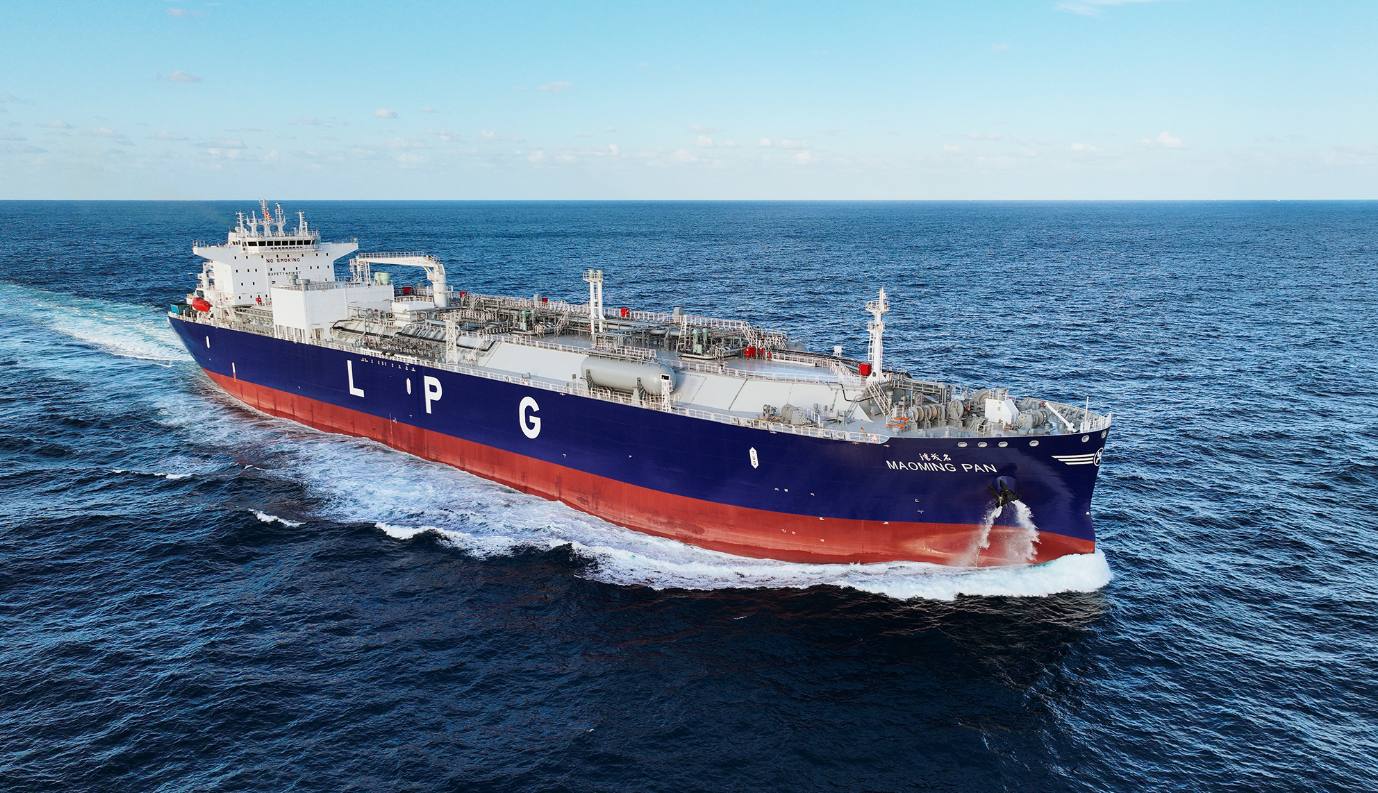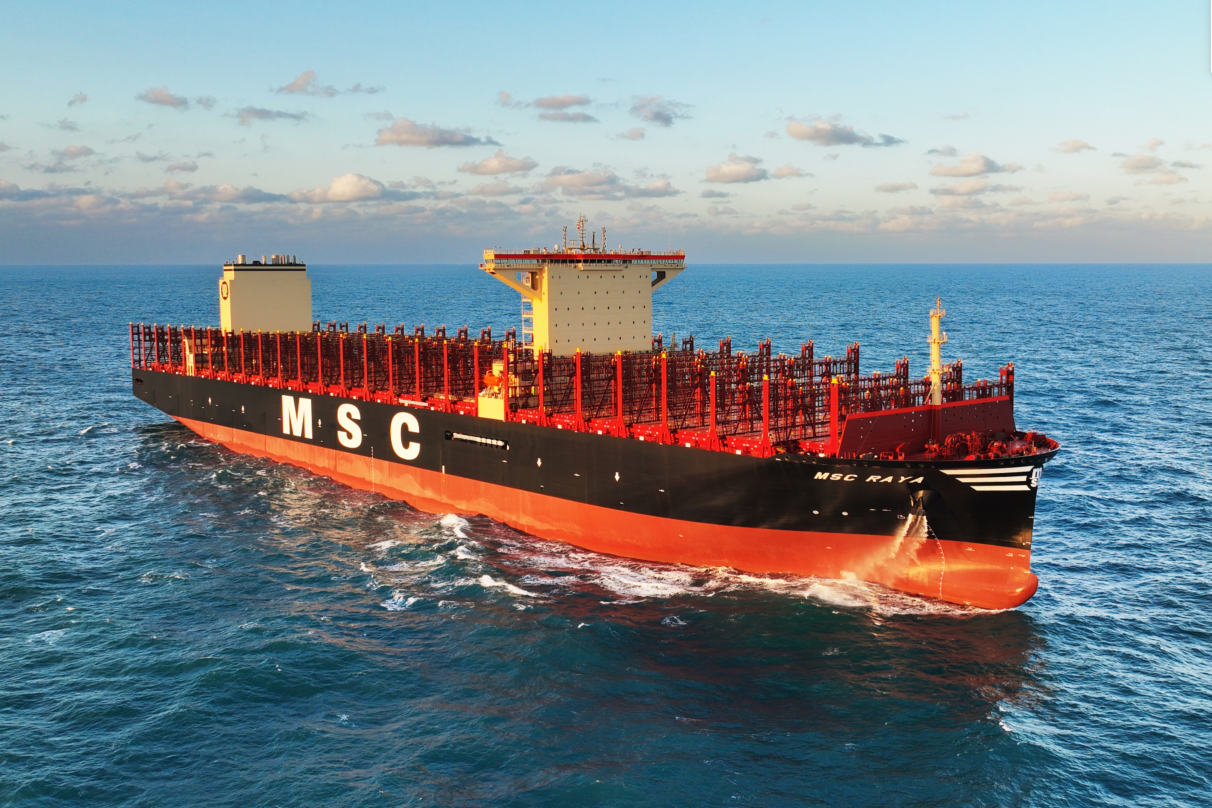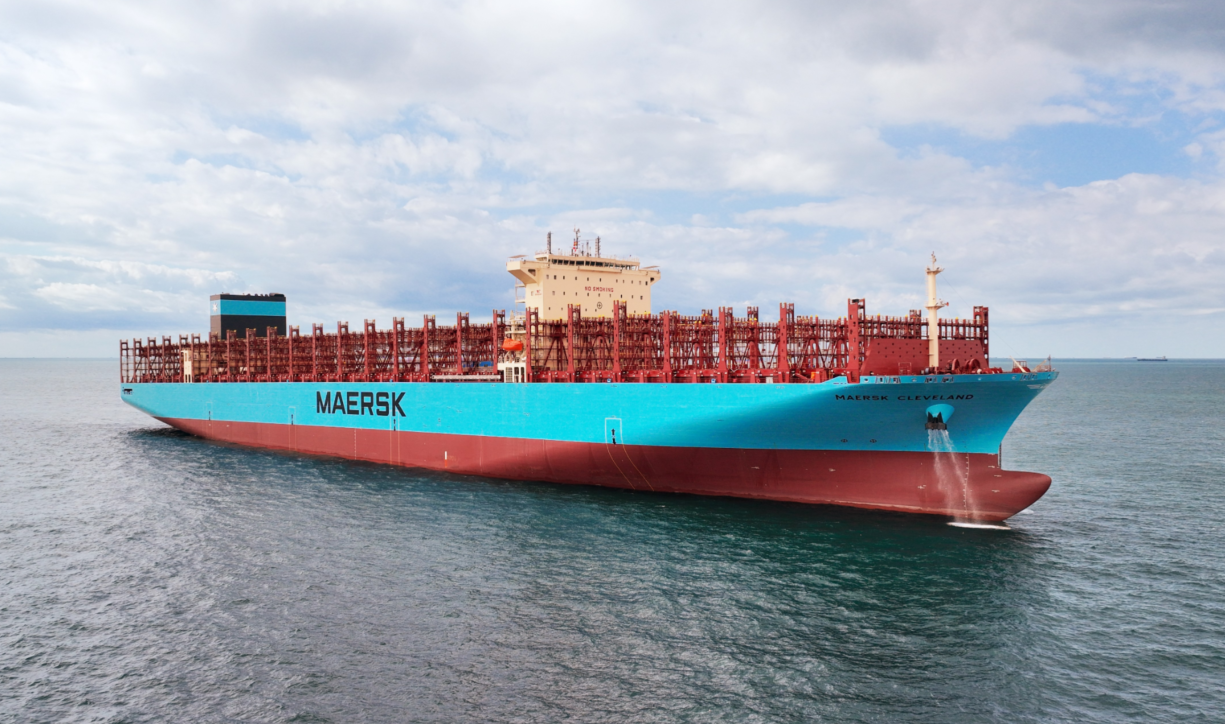On November 28, the second 93,000m3 VLGC “Pan Maoming” built by Jiangnan shipyard (Group) Co., Ltd,(Jiangnan shipyard) under China State Shipbuilding Corporation (CSSC), was completed and handed over to Donghua Energy Co.

This vessel is the additional production ship outside the annual plan of Jiangnan Shipyard, and it is the 17th commercial ship delivered this year, all of which are medium and high end vessels. It marks that Jiangnan Shipyard continues to promote the effectiveness of high-quality development, and the successful conclusion of the annual delivery of commercial vessels.
This is the year when Jiangnan shipyard‘ product transformation and upgrading, process and method innovation and lean management and production are fully accelerated. Jiangnan Shipyard delivered 5 types and 17 commercial vessels for the whole year: including 9 93,000m3 VLGCs, 2 86,000m3 super-large VLGCs, 1 40,000m3 medium-sized fully-cooled LPGC, as well as 4 24,000TEU ultra-large container vessels and 1 15,500TEU large container vessel.
Particularly, the company’s self-developed design and construction of the world’s largest dual-fuel-powered fourth-generation VLGC boutique model (Panda 93P) for the first time ushered in the centralized batch delivery, further consolidating its position as a global VLGC R&D and construction center.

Jiangnan Shipyard has always been adhering to the concept of “customer-oriented”, insisting on process innovation and process optimization to maximize efficiency, to make every effort to create a high-quality VLGC ship type.
The 93,000m3 VLGC not only has a large capacity, but also adopts dual-fuel technology, which can be powered by both traditional fuel and clean liquefied petroleum gas (LPG). The vessel is equipped with 4 A-type independent liquid tank enclosure systems, and adopts Jiangnan Shipyard’s highly efficient patented VS-Bow technology, which, together with the “LPG dual-fuel main engine + axle-belt generator propulsion system”, can minimize sulfur oxides and particulate matter emissions in the future operation of the vessel, and meet the third stage requirements of the EEDI, while reducing nitrogen oxides emissions by 80%.

With an overall length of 230 meters, a beam of 36.6 meters and a speed of 16.5 knots, the vessel is classified by DNV and has excellent and balanced performance under full load, ballast and liquid cargo loading conditions of different specific gravity. Especially against the same type of products at home and abroad, this ship has strong competitive advantages, including the first application of self-developed rudder ball energy-saving device technology, the ship’s rapidity has reached the international leading level; for the first time to realize the low-temperature steel localization, significantly compressed the procurement cycle; fuel range up to 23,000 nautical miles to meet the latest emission requirements of the International Maritime Organization (IMO).
In the field of large ultra-large container ship construction, Jiangnan shipyard also has a lot of highlights. The 24000TEU ultra-large container ship, which is known as “sea giant” and “super king of cargo”, has realized the beat construction and batch delivery. The 15,500 TEU large container ships and the 15,000 TEU and 14,000 TEU liquefied natural gas (LNG) dual-fuel-powered large container ships under construction are advancing in strict accordance with Jiangnan Shipyard’s original “843” production rhythm, which has produced remarkable results.

Since this year, Jiangnan Shipyard has comprehensively applied the “double-docking and double-line, three-zone linkage” method to maximize the utilization of resources. The company rationally plans the production resources, by controlling the tempo, realizes the synchronous construction of No.3 dock, No.4 dock and heavy platform. And each batch of 4 whole ships out of the dock, 4 half-ships floating and double giant ring section floating into the dock, which has been formed into a normalization, and significantly improves the construction efficiency.
Moreover, Jiangnan shipyard promotes the application of the new technology of “three-in-one” trial voyage for liquefied gas vessels and “ship-to-ship barging” for ultra-large liquefied gas vessels. By the experiences accumulated through the “two-in-one” sea trial and the breakthrough of A-type tank cargo test technology, Jiangnan Shipyard decomposes and integrates the conventional sea trial, gas sea trial and cargo test projects to realize the “process reengineering”. By continuously optimizing the personnel organization, process technology, safety control, filling and testing process, the ship has achieved the “three-in-one” trial voyage, which further shortened the construction cycle, reduced the construction cost, and formed a new mode of shipbuilding that can be replicated and promoted.


